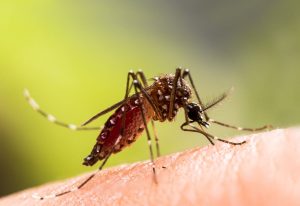 We all love a good massage, but to non-massage therapists like myself, I don’t really know the difference between the different types. Sure, I’m familiar with Swedish, Thai and a few other basic types that are offered in just about every day spa, but if you were to ask me the difference between Reiki and reflexology, I wouldn’t know what to tell you. Massage isn’t just about feeling good; there are actually many benefits associated with this ancient healing art. In addition to decreasing muscle pain and tension, massage also helps improve circulation, provides relaxation, and even helps get rid of headaches and stress. Check out this guide to the different types of massages so that you can decide which one your body needs. Or just try them all!
We all love a good massage, but to non-massage therapists like myself, I don’t really know the difference between the different types. Sure, I’m familiar with Swedish, Thai and a few other basic types that are offered in just about every day spa, but if you were to ask me the difference between Reiki and reflexology, I wouldn’t know what to tell you. Massage isn’t just about feeling good; there are actually many benefits associated with this ancient healing art. In addition to decreasing muscle pain and tension, massage also helps improve circulation, provides relaxation, and even helps get rid of headaches and stress. Check out this guide to the different types of massages so that you can decide which one your body needs. Or just try them all!
Aromatherapy – If you’re really into scents and fragrances, aromatherapy massage incorporates scented oils into the massage in order to relax, energize, balance and reduce stress. Just be sure to go light on the perfume since you’ll leave this massage smelling like a combination of several different essential oils.
Deep Tissue – For those looking to get some deeper knots and muscle kinks taken care of, deep tissue massage helps to target the deeper layers of muscle and connective tissue. This treatment is used for postural problems, injuries, muscles that are chronically tight or painful, and repetitive strain. On occasion, deep tissue massage has been known to leave light bruising that goes away in a few days, accompanied by soreness for several days after. But if you want results, this will definitely deliver.
Hot Stone – This comforting massage is perfect for cold winter months. A massage therapist applies heated, smooth stones to certain parts of the body in order to help loosen tight muscles and balance energy centers. On occasion, the therapist will hold the stones and apply gentle strokes to the body. This is a great treatment for those who experience muscle tension.
Reflexology – Specifically designed for the feet, reflexology involves applying pressure to certain points on the foot that are connected to the organs and body systems. This massage is ideal for people who stand a lot or who have tired and achy feet. Like, anyone who works retail.
Shiatsu – This is a Japanese practice where finger pressure is applied in a rhythmic sequence to various points on the body and held for several seconds to improve energy flow and help the body regain a sense of balance. While the pressure is firm, the procedure is relaxing, and most people who have Shiatsu don’t feel sore afterwards.
Swedish – The most common and popular type of massage therapy, Swedish massage is also known as basic massage therapy and involves long, smooth strokes, kneading and circular movements on the upper muscle levels with lotion or oil. This is a more gentle and relaxing treatment and recommended if you’re getting your first massage ever. If you have deeper knots or muscle issues, this won’t be as helpful as a deep tissue massage, but it will provide you with a good introduction.
Thai – This Asian massage art works by using gentle pressure on specific points of the body to align energy. It’s a more involved massage, with the therapist moving and stretching the body into a series of yoga-like poses. In addition to being energizing, Thai massage also helps reduce stress levels and improves one’s flexibility and range of motion. While in Thailand, my massage therapist ended the session by gently tapping my body with some kind of oversized banana leaf. If you’re looking to fall asleep on the massage table, this isn’t the right type of massage for you.

-300x200.jpeg)









-300x241.jpeg)




